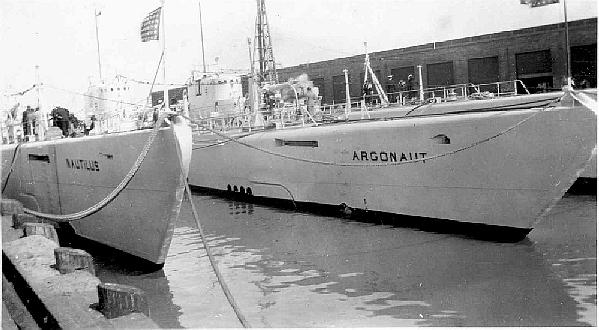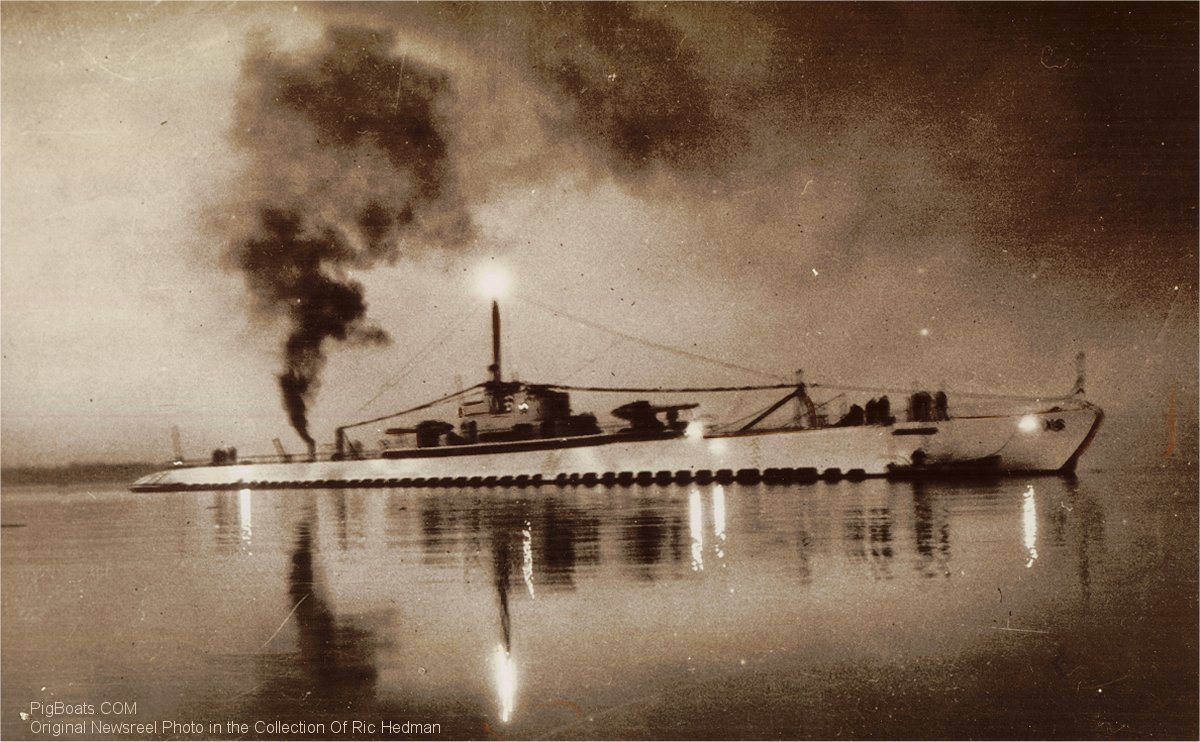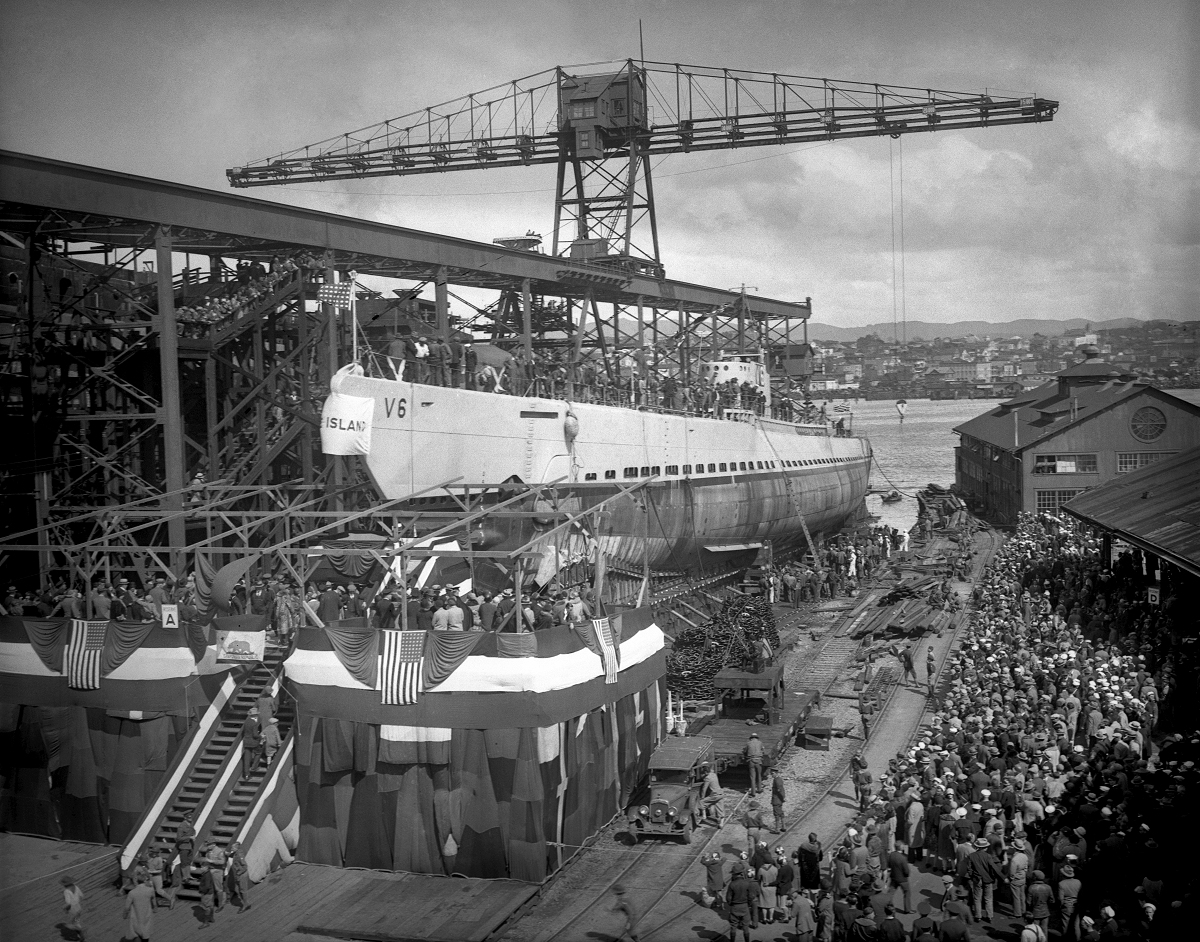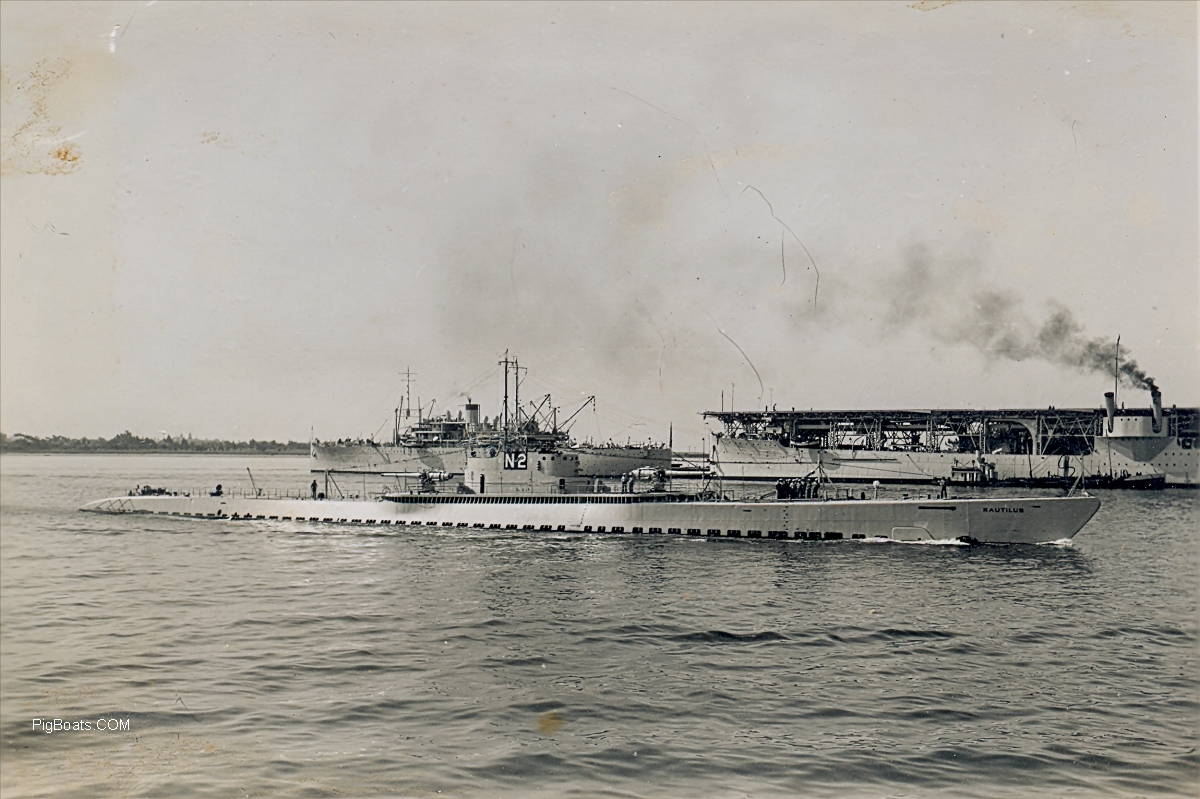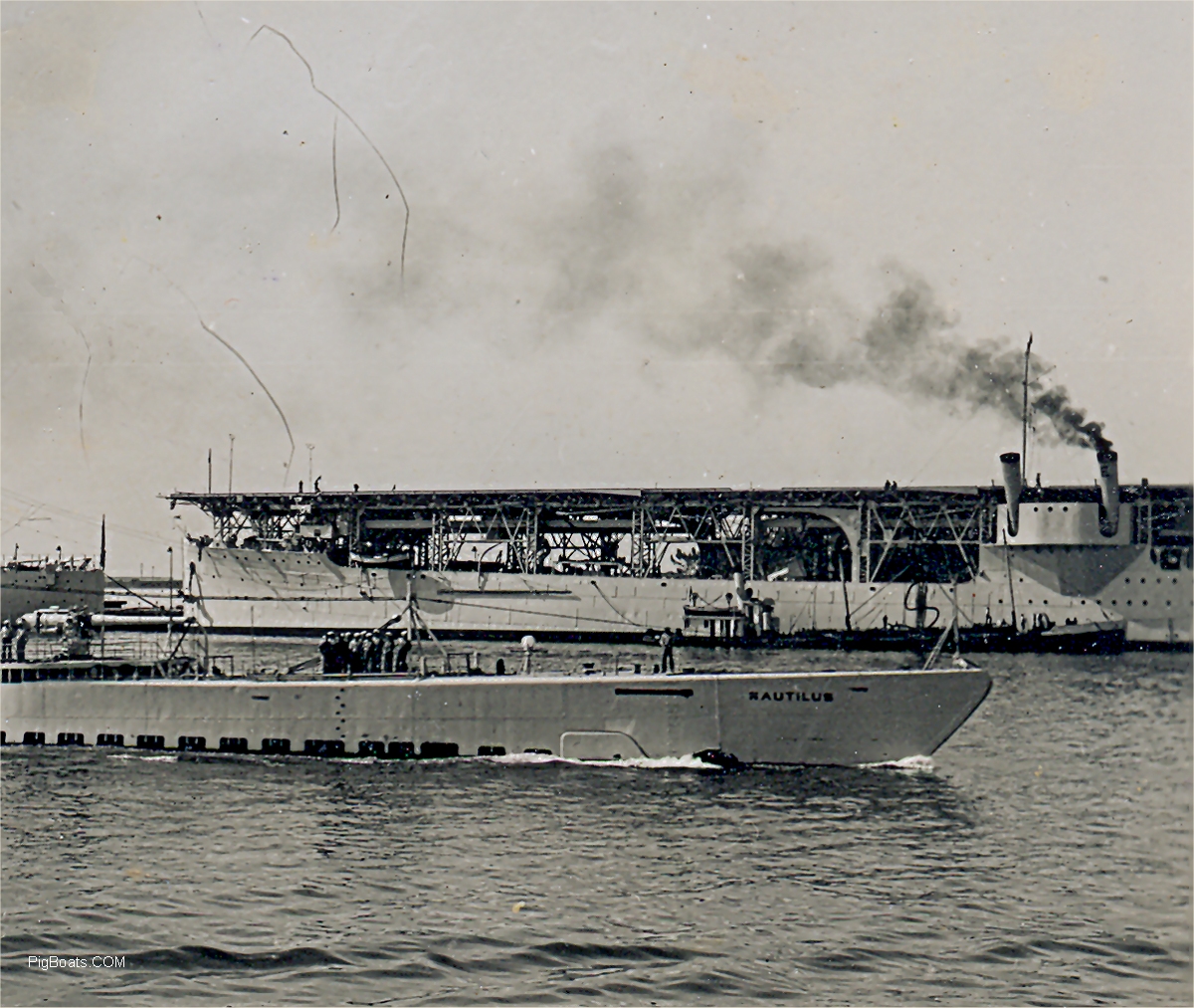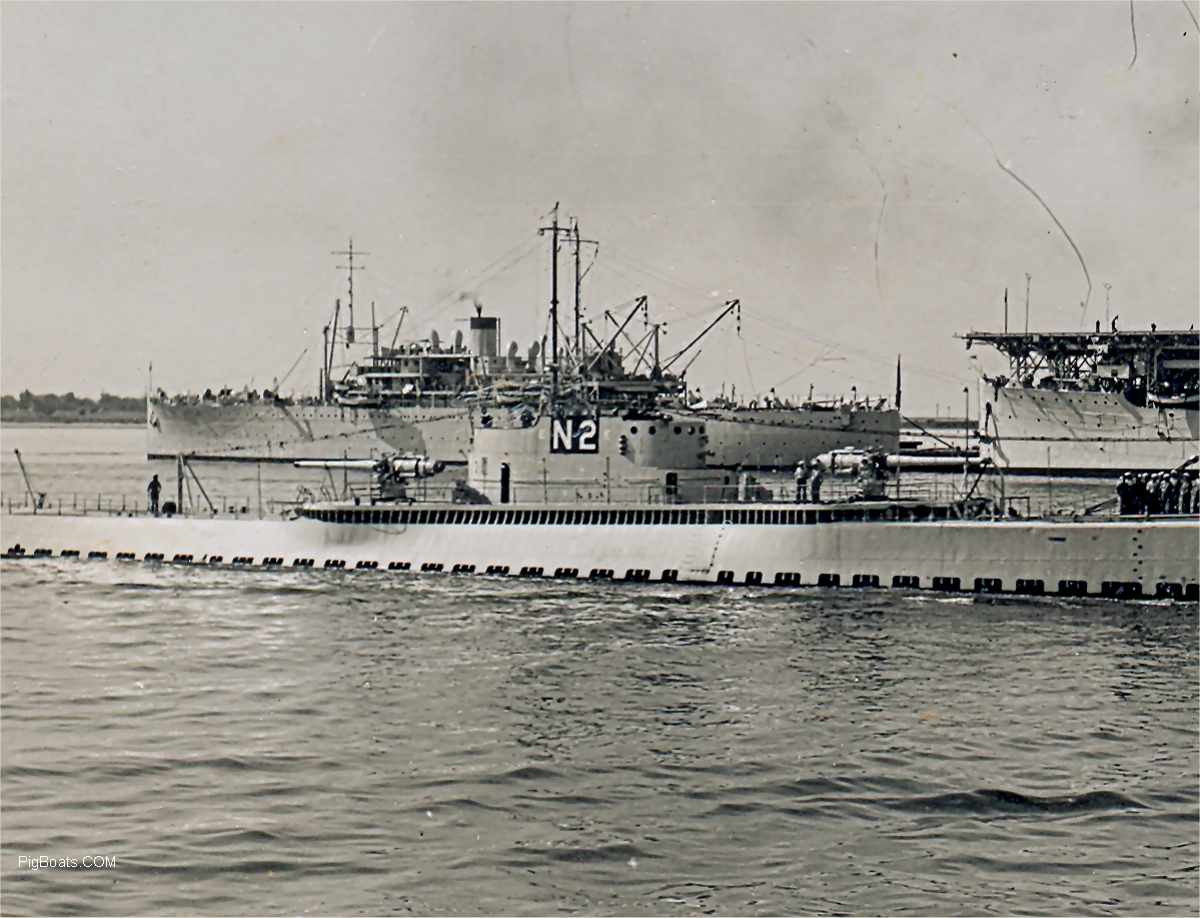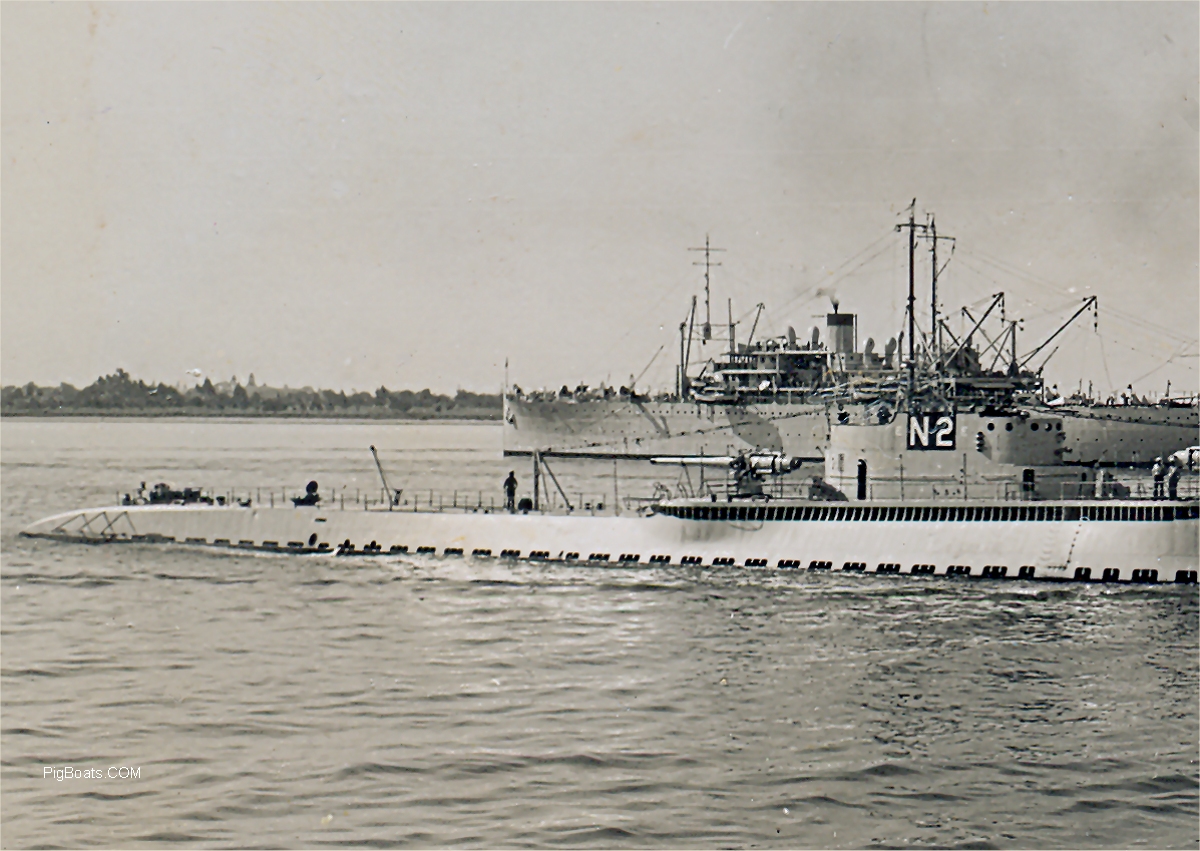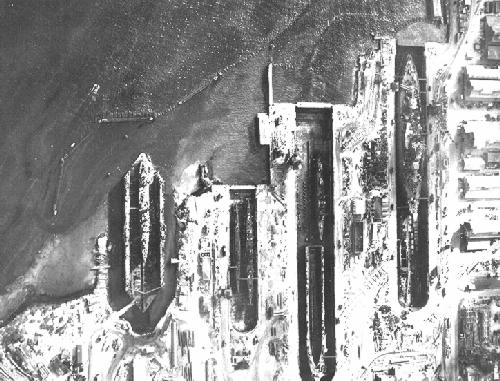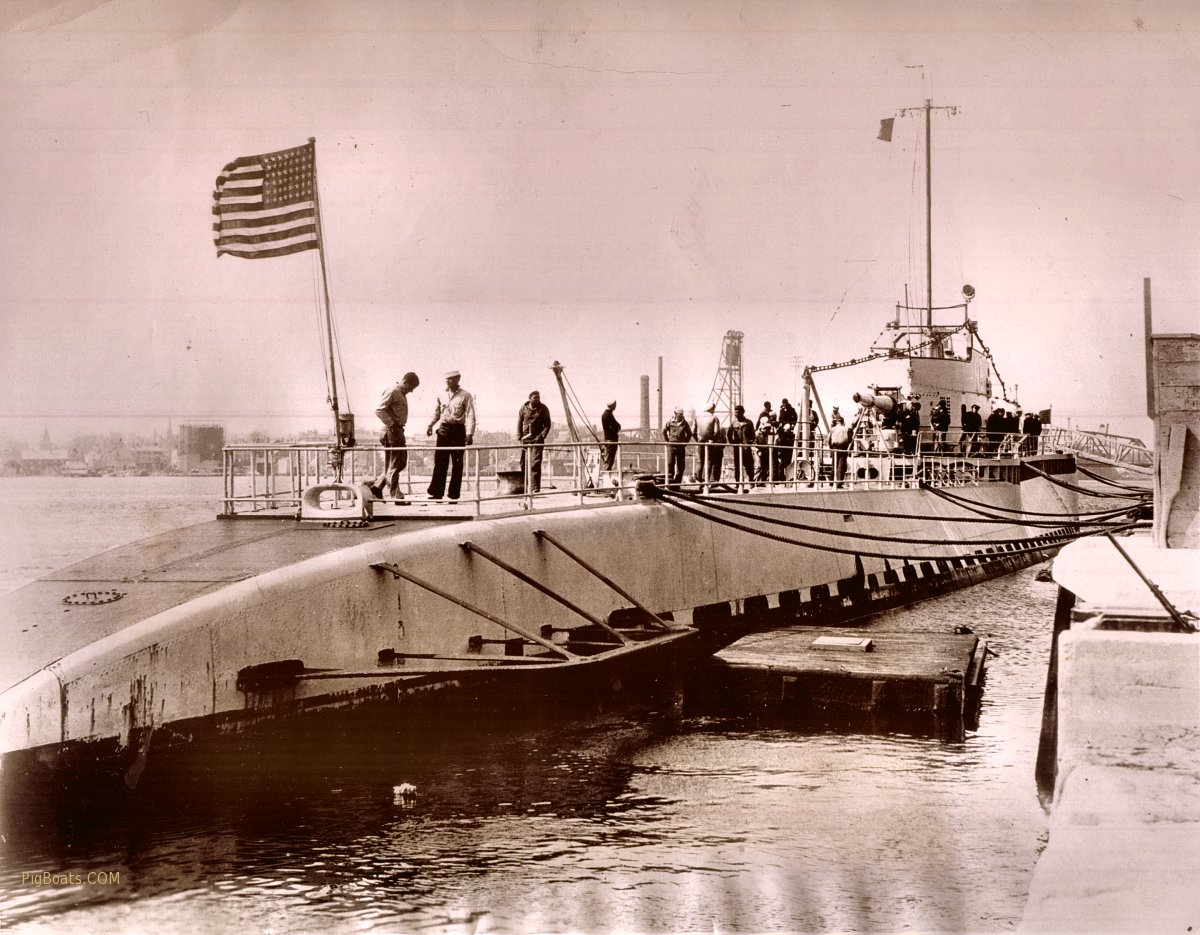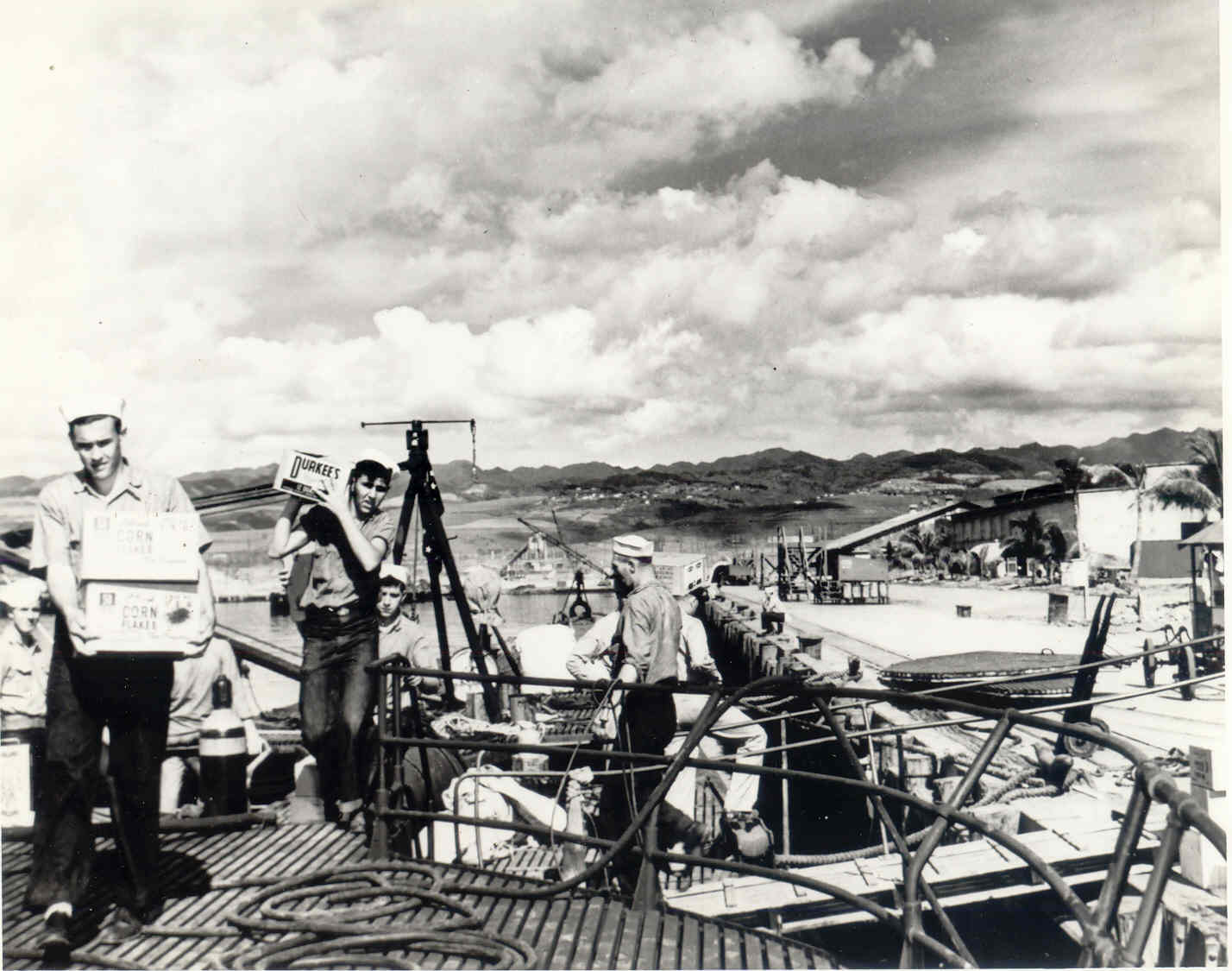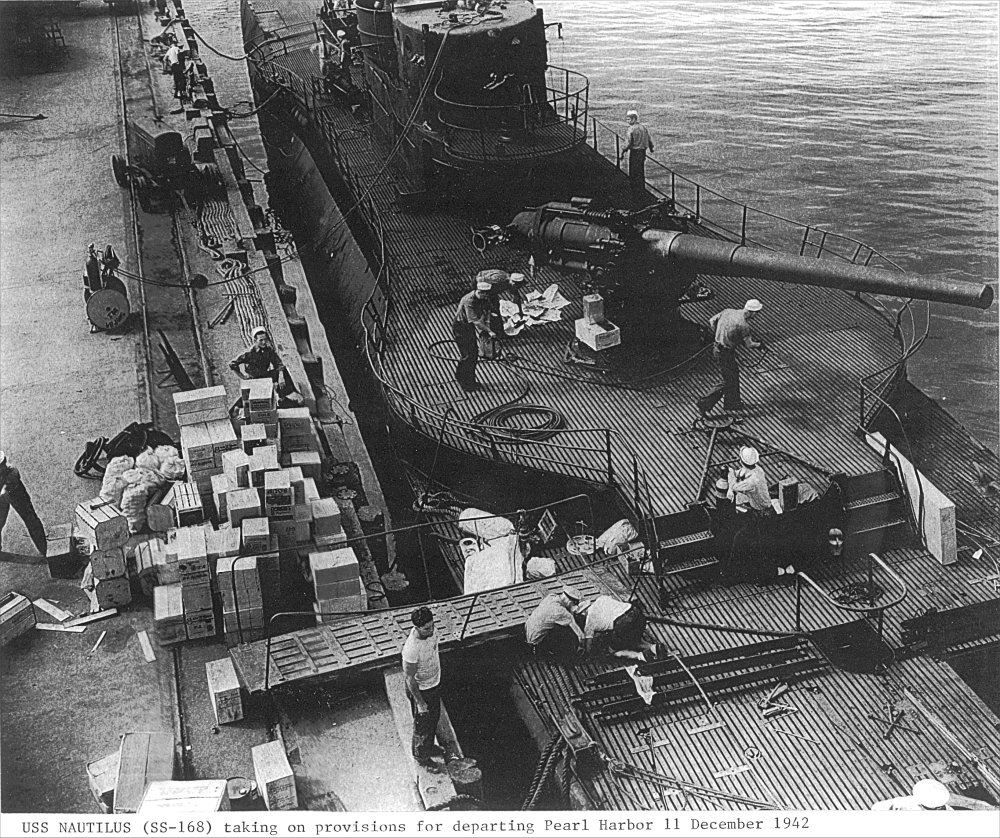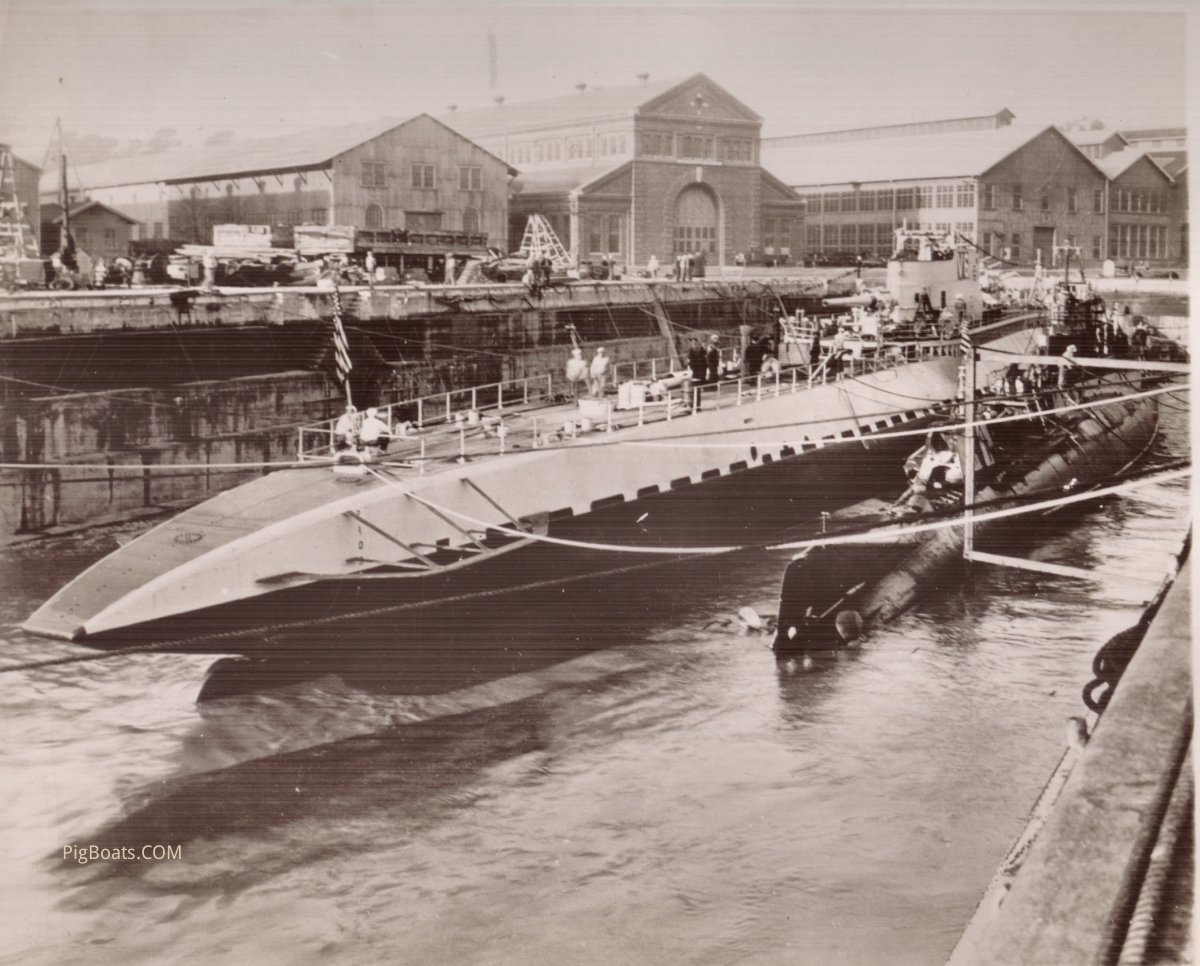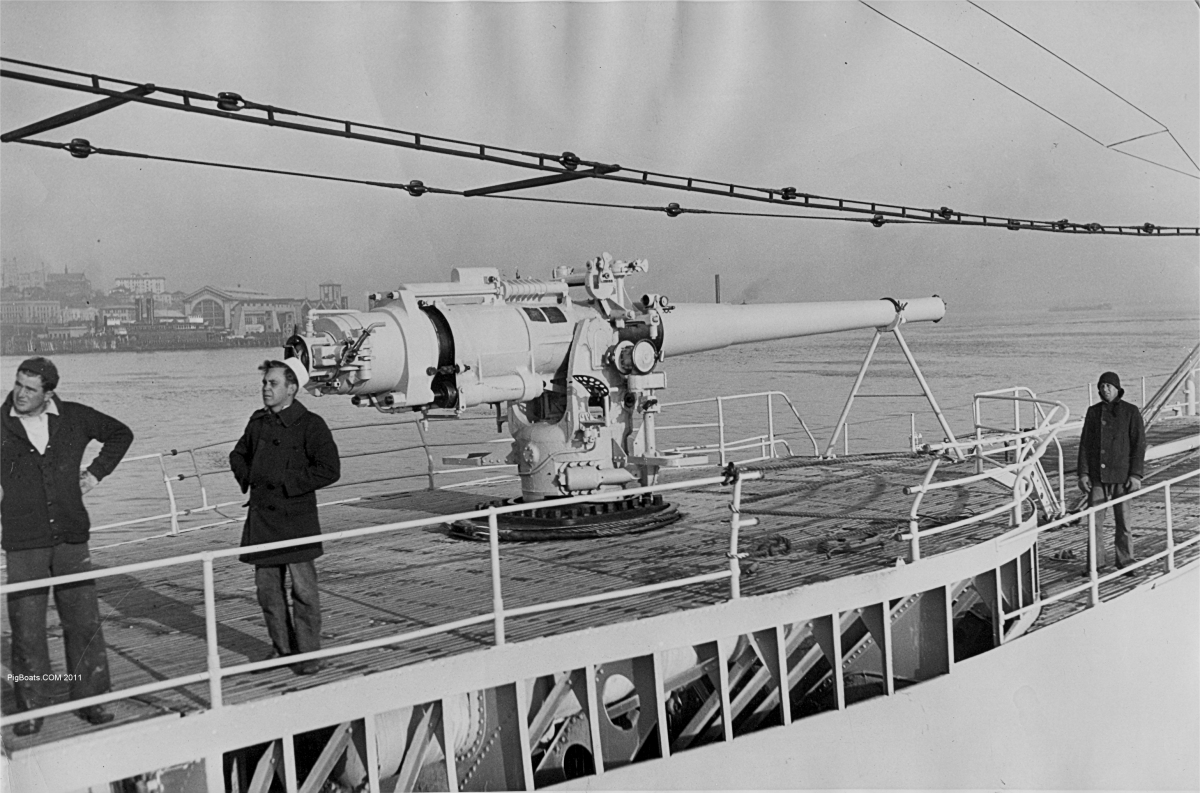168: Difference between revisions
Pbcjohnston (talk | contribs) Uploaded photos |
Pbcjohnston (talk | contribs) Started photo formatting |
||
| Line 1: | Line 1: | ||
[[File:Header 3 New.jpg]] | [[File:Header 3 New.jpg]] | ||
[[File]] | [[File:Nautilus build-1.jpg|left|500px]] | ||
<div style="text-align: justify;"><span style="color:#00008B"> | <div style="text-align: justify;"><span style="color:#00008B">Scaffolding being erected at Mare Island Navy Yard, Building Ways #2, Vallejo, California, April 14, 1927 in preparation for the start of construction for the V-6. The scaffolding in which the V-6 will be built is almost complete, even including the cofferdam around the stern since this portion extends down to the water level at the foot of the ways. You can see the water lifting pump and hoses to keep the cofferdam area water free at the photo's bottom.</span> | ||
<small> | <small>U.S. Navy photo courtesy Darryl Baker</small> | ||
[[File:Red bar sub new 2.jpg]] | |||
[[File:Nautilus build-1A.jpg|left|500px]] | |||
<div style="text-align: justify;"><span style="color:#00008B">Mare Island Navy Yard, Building Ways #2, Vallejo, California, August 27, 1927, the construction of the V-6 is about to begin. Navy and yard officials and workman line up for the official keel laying photograph. The banner proclaims: "When Better Submarines Are Built Mare Island Will Build Them" | |||
From left to right: Front row; LT J. W. (Duke) Paige, C.C., Ship Supt; CDR E. L. Patch, C.C., Asst. Inside Supervisor, New Work Hull (In general charge of Keel Laying Arrangements); CDR F. J. Wille, Outside Supt.; CAPT C. S. McDowell, Inside Supt.; LCDR W. C. Wade, Asst. Shop Supt.; RADM J. H. Dayton, Commandant Mare Island Navy Yard; CDR E. D. (Bill) Almy, Shop Supt.; J. T. Moroney, Master Shipfitter. | |||
Back Row: Fred Coppo, Rivet Heater; A. P. Schneidewind, Riveter; J. F. Nichelini, Holder-on (all members of regular riveting gang); Honorary Riveting Group: A. L. Luck, Leadingman Shipwirght "Riveter"; W. L. Blackmore, Leadingman Pipefitter "Rivet Passer"; J. E. Moon, Leadingman Machinist "Rivet Heater"; Charles Deaver, Quarterman Riveter "Rivet Heater"; Tom Schofield, Master Rigger & Laborer "Holder-on"; B. A. (Bert) Barr. Quarterman Shipfitter "Riveter"; F. W. Savage, Quarterman Electrician "Rivet Tester"; J. R. Greig, Asst. Shop Supt. "Rivet Tester. | |||
The primary construction method was obviously riveting. But at this time there were experiments underway at Navy yards to incorporate welding. Although not shown in this photo, some non-critical areas such as pipe brackets, superstructure supports, and interior deck joinery were welded. | |||
<small>U.S. Navy photo courtesy Darryl Baker</small> | |||
[[File:Red bar sub new 2.jpg]] | |||
[[File:Nautilus build-2.jpg|left|500px]] | |||
<div style="text-align: justify;"><span style="color:#00008B">The construction of the V-6 has begun. In a keel laying ceremony, officials and workmen ceremonially drive the first rivet in the hull. The first of what will be millions that this vessel will take before she is finished. The workmen and officials all wear an arm band with "V-6" printed on it. | |||
<small>U.S. Navy photo courtesy Darryl Baker</small> | |||
[[File:Red bar sub new 2.jpg]] | |||
[[File:Nautilus build-3.jpg|left|500px]] | |||
<div style="text-align: justify;"><span style="color:#00008B">The rivet team seen in close up. To the left is the forge where rivets are heated. Hot rivets are taken from the forge by one man and passed to a "tosser" and the rivet is caught and shoved through the pre-drilled hole and held in place by a "bucker" who holds a tool with the shape of the rivet head in it on the rivet's head. The two men on the right are using large hammers to "peen" the other end of the rivet up tight to the hull plates. When the rivet cools it will shrink tight. | |||
<small>U.S. Navy photo courtesy Darryl Baker</small> | |||
[[File:Red bar sub new 2.jpg]] | |||
[[File:Nautilus build-4.jpg|left|500px]] | |||
<div style="text-align: justify;"><span style="color:#00008B">Almost 13 months after laying the keel the V-6 has pretty much filled the scaffolding at the Mare Island Navy Yard. The date is September 8, 1928. It will still be another year and a half before she touches water. You can see the two massive mounts for the 6 inch/53 caliber guns that will sit on her decks. V-6 and her sisters were all full double hull submarines. The outer ship-shaped hull was wrapped around the inner cigar-shaped pressure hull, with the void spaces between containing the fuel and ballast tanks. | |||
<small>U.S. Navy photo courtesy Darryl Baker</small> | |||
[[File:Red bar sub new 2.jpg]] | [[File:Red bar sub new 2.jpg]] | ||
| Line 10: | Line 44: | ||
[[File:Nautilus Argonaut.jpg]] | [[File:Nautilus Argonaut.jpg]] | ||
[[File:Nautilus at anchor c1931a.jpg]] | [[File:Nautilus at anchor c1931a.jpg]] | ||
[[File:Nautilus launch-1.jpg]] | [[File:Nautilus launch-1.jpg]] | ||
[[File:Nautilus pearl 1934-1a.jpg]] | [[File:Nautilus pearl 1934-1a.jpg]] | ||
Revision as of 15:28, 23 June 2023
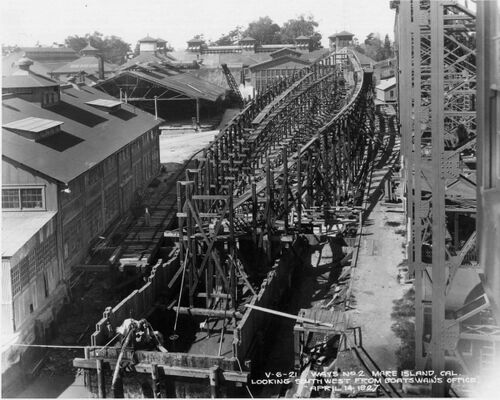
U.S. Navy photo courtesy Darryl Baker
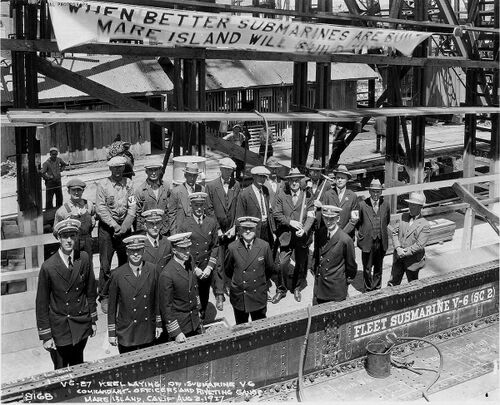
From left to right: Front row; LT J. W. (Duke) Paige, C.C., Ship Supt; CDR E. L. Patch, C.C., Asst. Inside Supervisor, New Work Hull (In general charge of Keel Laying Arrangements); CDR F. J. Wille, Outside Supt.; CAPT C. S. McDowell, Inside Supt.; LCDR W. C. Wade, Asst. Shop Supt.; RADM J. H. Dayton, Commandant Mare Island Navy Yard; CDR E. D. (Bill) Almy, Shop Supt.; J. T. Moroney, Master Shipfitter.
Back Row: Fred Coppo, Rivet Heater; A. P. Schneidewind, Riveter; J. F. Nichelini, Holder-on (all members of regular riveting gang); Honorary Riveting Group: A. L. Luck, Leadingman Shipwirght "Riveter"; W. L. Blackmore, Leadingman Pipefitter "Rivet Passer"; J. E. Moon, Leadingman Machinist "Rivet Heater"; Charles Deaver, Quarterman Riveter "Rivet Heater"; Tom Schofield, Master Rigger & Laborer "Holder-on"; B. A. (Bert) Barr. Quarterman Shipfitter "Riveter"; F. W. Savage, Quarterman Electrician "Rivet Tester"; J. R. Greig, Asst. Shop Supt. "Rivet Tester.
The primary construction method was obviously riveting. But at this time there were experiments underway at Navy yards to incorporate welding. Although not shown in this photo, some non-critical areas such as pipe brackets, superstructure supports, and interior deck joinery were welded.
U.S. Navy photo courtesy Darryl Baker
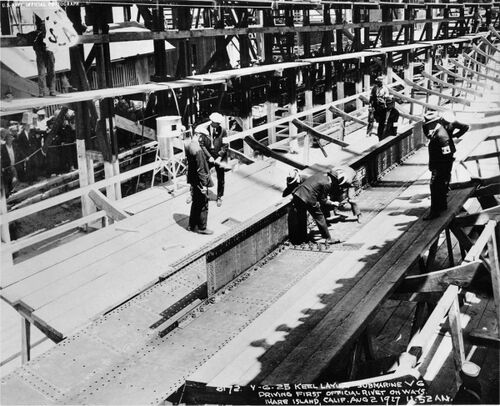
U.S. Navy photo courtesy Darryl Baker
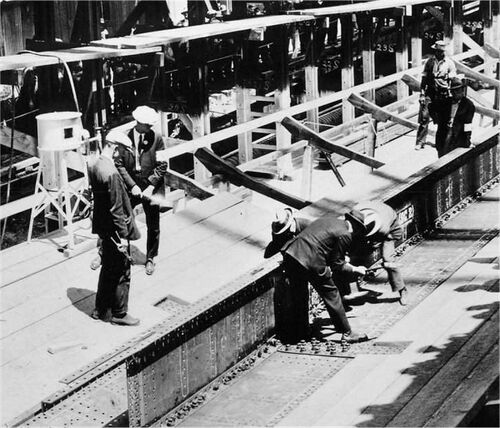
U.S. Navy photo courtesy Darryl Baker
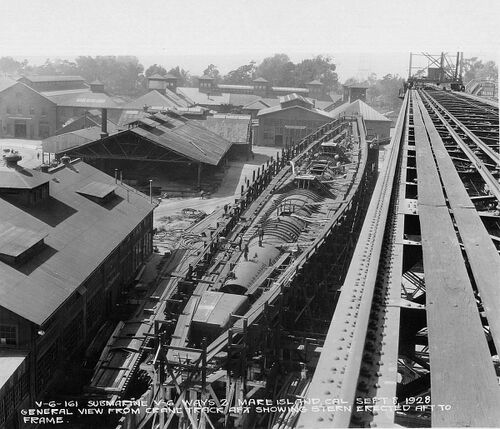
U.S. Navy photo courtesy Darryl Baker
Page created by:
Ric Hedman & David Johnston
1999 - 2023 - PigBoats.COM©
Mountlake Terrace, WA, Norfolk, VA
webmaster at pigboats dot com

